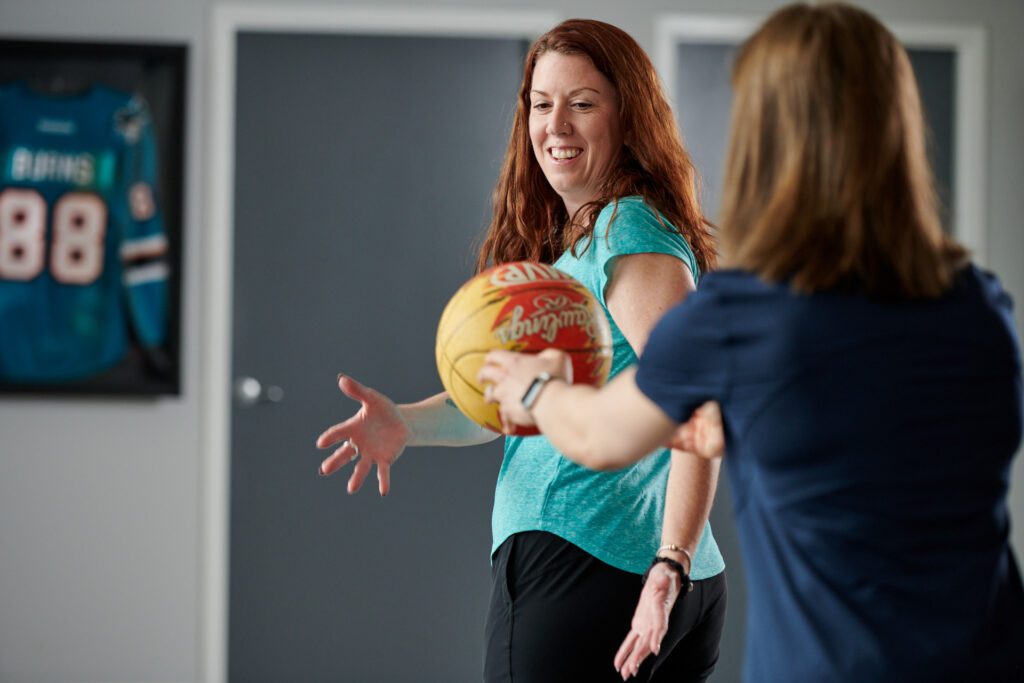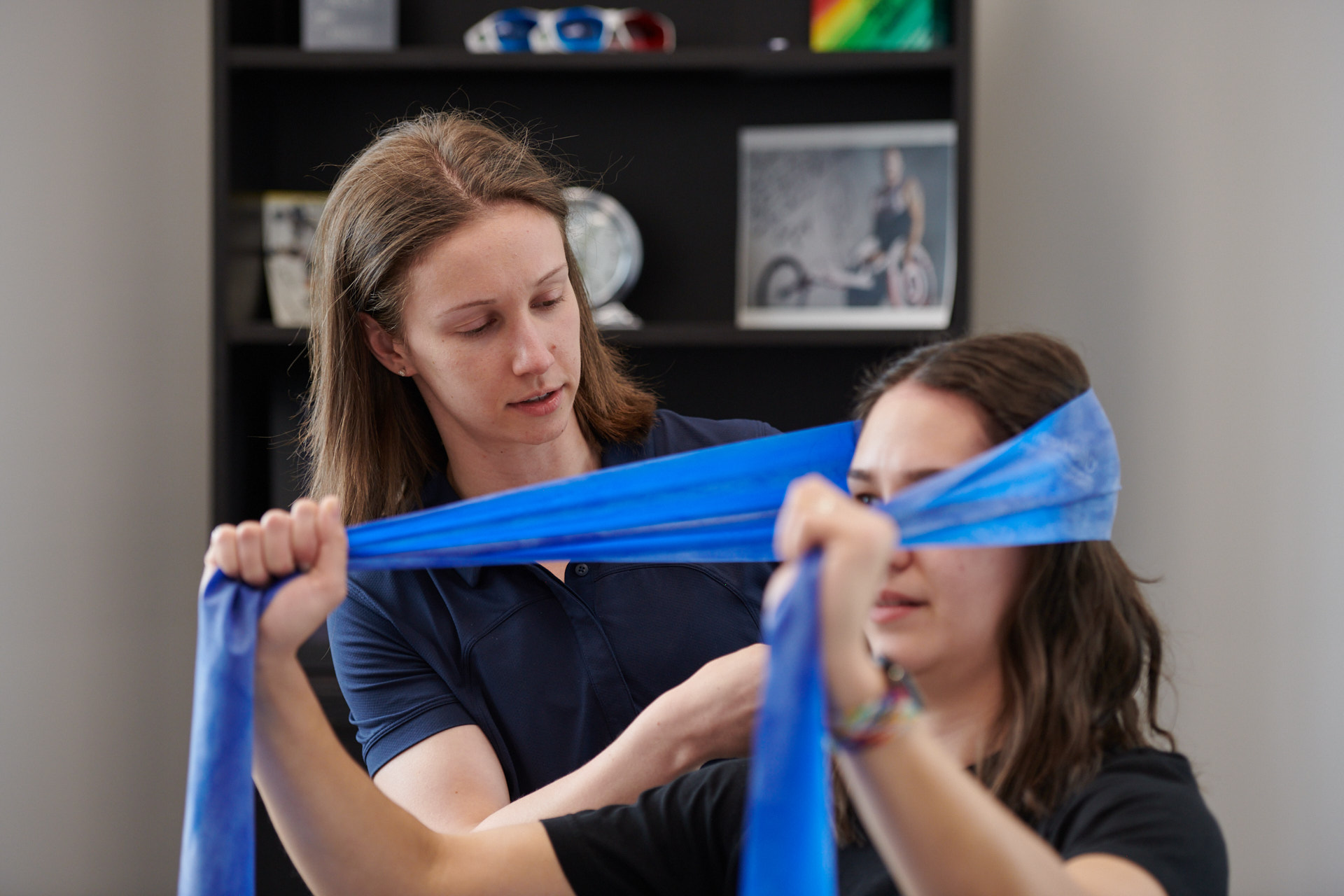A concussion can turn your world upside down, leaving you feeling confused, disoriented, and unsure of what to do next. Whether it’s from a sports injury, a fall, or an accident, the impact of a concussion extends far beyond the initial blow. It affects your brain function, your ability to concentrate, and even your emotional well-being. But here’s the good news: with the right information and support, you can recover fully. This guide provides a roadmap for navigating the often-complex world of concussion recovery. We’ll explore the immediate and delayed symptoms, discuss the importance of medical evaluation, and offer practical strategies for managing your recovery. We’ll also delve into the long-term risks and how to mitigate them, empowering you to take control of your healing journey.
Key Takeaways
- Recognize concussion symptoms: Knowing the signs, whether immediate or delayed, helps ensure prompt action and proper care. Seek medical attention if you suspect a concussion, even if symptoms seem minor.
- Rest and recover gradually: Prioritize both physical and mental rest in the early days. Gradually increase your activity level as symptoms subside, and consult your doctor before resuming demanding activities.
- Focus on safety and education: Promote a safety-conscious environment through education and established protocols, especially in sports. This helps prevent concussions and ensures proper management when they occur.
What is a Concussion?
A concussion is a mild traumatic brain injury (mTBI). It happens when your brain gets jolted or shaken inside your skull. This often results from a direct blow to the head, or sometimes from an indirect blow to the upper body causing an impulsive force to be transmitted to your brain. This jostling disrupts normal brain function, leading to a range of symptoms. While the effects are usually temporary, they can be significant, impacting everything from your ability to concentrate to your physical coordination. For more information on how concussions affect the brain, check out our section on How Concussions Affect Your Brain. You can also find helpful information on what to do after a concussion in our article, What should I do after a concussion (early steps and strategies).
Concussions typically occur from direct impacts to the head. However, they can also happen from violent shaking of the head and upper body, such as with a collision with another player on the sports field, even without a direct blow. It’s important to understand that even a seemingly minor hit can be enough to cause concussion symptoms in some individuals.
The good news is that most people recover fully from a concussion. However, the recovery time varies from person to person. Understanding what a concussion is is the first step toward effective management and prevention. We encourage you to explore personal stories of concussion recovery, like My Concussion Recovery: From a Devastating Fall to a Triumphant Return, to see how others have navigated this experience. For a quick overview of concussion recovery, listen to our introductory audio guide. You can also learn more about conquering memory problems after a head injury in our comprehensive guide.
How Concussions Affect Your Brain
Think of your brain as having the consistency of gelatin, cushioned by cerebrospinal fluid inside your skull. This fluid protects it from everyday bumps and jolts. But a significant blow to your head, neck, or even upper body can cause your brain tissue to shift and stretch within the skull. This sudden movement can disrupt normal brain function, resulting in a concussion—a type of traumatic brain injury.
The effects are typically temporary. Common issues include headaches, difficulty concentrating, memory problems, balance issues, and coordination problems. While most people recover fully, understanding the potential risks associated with concussions is crucial for proper management and recovery.
One significant risk is returning to activity too soon. If you’ve sustained a concussion, allowing your brain adequate time to heal is essential. Prematurely returning to play can lead to serious complications, including persistent symptoms or even second-impact syndrome. This dangerous condition occurs when someone experiences a second concussion before fully recovering from the first. For guidance on the recovery process, check out our “Introductory Audio Guide” on navigating concussion recovery.
Recognize Concussion Symptoms
Knowing the signs of a concussion is crucial for anyone, whether you’re an athlete, a parent, or just concerned about your well-being. Concussions can be tricky because symptoms don’t always appear immediately. Some are obvious, while others are more subtle and can easily be missed. This section will walk you through the different types of concussion symptoms, both immediate and delayed, so you can be prepared to take action if you suspect a concussion.
Immediate Symptoms
Immediately following a head injury, several symptoms can indicate a concussion. These symptoms vary from person to person, and not everyone experiences all of them. Common immediate symptoms include headaches, pressure in your head, temporary loss of consciousness, confusion or a foggy feeling, and amnesia surrounding the event. It’s like a short circuit in your brain—things might not be working quite right. You might also experience dizziness, ringing in your ears, nausea or vomiting, balance difficulties, and delayed responses to questions. You might simply appear dazed to those around you. If you notice any of these signs after a head injury, seek immediate attention. For a helpful guide on initial steps, check out what to do after a concussion.
Delayed Symptoms
Sometimes, concussion symptoms don’t appear right away. They can emerge hours or even days after the initial injury. These delayed symptoms can include difficulty concentrating, memory problems, irritability and other emotional changes, sensitivity to light and noise, sleep disturbances, and feelings of anxiety and depression or low mood. It’s important to remember that a second concussion during the healing process can be especially harmful, so recognizing and addressing these delayed symptoms is vital for a full recovery. For further insights into concussion recovery, explore Concussion Hub’s introductory audio guide and the resource on conquering memory problems.
Get Evaluated After a Suspected Concussion
If you suspect a concussion, taking immediate action is crucial. A prompt evaluation is the first step toward proper management and recovery. This section emphasizes the importance of seeking a professional assessment after a potential head injury.
Immediate Assessment and Removal from Play
After a possible concussion, the immediate priority is safety. If you’re on the field, court, or ice, established protocols often require removal from play. This isn’t just about avoiding further injury during the game; it’s about protecting the individual from potentially worsening the initial injury. Even seemingly minor impacts can have significant consequences if a concussion is already present. Athletic organizations, from youth leagues to professional levels, are increasingly adopting these safe-play protocols to prioritize player safety. If you’re a parent, coach, or teammate, ensure the person suspected of having a concussion is removed from the activity and doesn’t return until evaluated by a healthcare professional. For more information on recognizing concussion symptoms and what to do immediately after a suspected concussion, check out our resources on early steps and strategies.
Medical Evaluation and Imaging
Seeing a doctor within a day or two of a head injury is essential, even if you think it’s minor or don’t require emergency care. A medical professional trained in evaluating concussions can accurately assess the injury and recommend appropriate next steps. This evaluation is crucial regardless of whether you lost consciousness. Many people with concussions never lose consciousness, so don’t use that as an indicator of severity. Your doctor might recommend imaging tests, such as a CT scan or MRI, to rule out more serious brain injuries. Early and proper medical evaluation is key to understanding the extent of the injury and developing a personalized recovery plan. State and organizational regulations often mandate this process, requiring clearance from a licensed healthcare professional before an athlete can return to play. This ensures a safe and informed approach to concussion management. You can also listen to our introductory audio guide on navigating concussion recovery.
Recover from a Concussion
Recovering from a concussion takes a multifaceted approach. It requires early rest, a gradual return to activities, and consistent monitoring. Concussion Hub offers valuable resources, including our audio guide on navigating concussion recovery, to support you through this process.
Rest and Heal
The foundation of concussion recovery is early rest over the first 1-2 days—both physical and mental. Your doctor might recommend taking a brief period of time off from work or school. Think of it like recovering from any other injury: your brain needs time to heal. Symptoms may last a few days or a few weeks, depending on the individual. Most people improve within a week or two, as described in this overview of concussions. For additional guidance during this initial phase, see our article on early steps and strategies after a concussion.
Gradually Return to Activities
After the initial rest period, you can gradually reintroduce activities. Avoid jumping back into your regular routine all at once. Slowly increase your activity level, paying close attention to how your body responds. Before resuming activities like driving, operating heavy machinery, or biking, consult your doctor. A concussion can temporarily affect reaction time and coordination, as explained in this concussion overview. For practical tips on managing memory problems during recovery, see our article on memory issues after head injuries.
Monitor and Follow Up
Consistent monitoring is crucial throughout your recovery. If symptoms persist for more than a week, follow up with your doctor, as advised in this resource on concussions. Early intervention and proper management can significantly influence your recovery and help prevent persistent symptoms. Understanding what to expect and knowing that full recovery is highly likely can make a real difference, as highlighted in this research on concussion rehabilitation. For a personal account of concussion recovery, read our story about a triumphant return after a devastating fall.
Rehabilitate After a Concussion
Rehabilitating after a concussion involves a multifaceted approach tailored to individual needs and recovery progress. It’s a journey that requires patience, support, and a commitment to evidence-based strategies.
Cognitive Rest and Gradual Stimulation
In the initial stages of recovery, cognitive rest is important. This means minimizing activities that demand mental effort, such as schoolwork, reading, screen time, and complex problem-solving. Think of it like resting a sprained ankle—you wouldn’t run a marathon on it immediately. Similarly, your brain needs time to heal after a concussion. Early recognition and intervention are key to a smoother recovery, setting clear expectations and emphasizing the likelihood of full symptom resolution, as highlighted in this research on persistent symptom rehabilitation. As symptoms subside, gradually reintroduce cognitive activities, starting with short, simple tasks and progressively increasing the duration and complexity. This gradual stimulation helps your brain regain its strength and stamina. For practical advice on managing the early stages after a concussion, explore our resources on initial steps after a concussion.
Physical and Vestibular Therapy
Physical and vestibular therapy can be a helpful form of concussion rehabilitation when indicated. Physical therapy addresses physical symptoms like headaches, neck pain, and balance problems. Vestibular therapy specifically targets issues with balance, dizziness, and motion sensitivity which are common after concussions. Learn more about vestibular therapy and its benefits. These therapies help you regain physical function and safely return to your normal activities. For athletes, a primary goal of active rehabilitation is safely returning to their sport. Because return-to-play decisions can be complex, understanding the specific sport and its inherent risks is essential, as discussed in this research on active rehabilitation and return to play.
Multidisciplinary Approach
Effective concussion management often requires a multidisciplinary approach, involving various healthcare professionals working together. This team may include physicians, neuropsychologists, physical therapists, occupational therapists, chiropractors and speech-language pathologists. This collaborative approach ensures all aspects of your recovery are addressed. This is particularly important for children and adolescents, where coordination between medical providers and schools is vital for meeting educational needs during recovery. Concussion Hub offers an introductory audio guide for navigating concussion recovery. We also share personal stories of recovery, like this one about a remarkable recovery after a serious fall, to offer hope and practical insights.
Manage Concussions in Athletes
Sports are a common cause of concussions, so athletes, coaches, and parents must understand how to manage them effectively. This means knowing when to remove an athlete from play, following proper return-to-play protocols, and understanding the role of equipment. Concussion Hub offers resources specifically designed for sports organizations dealing with concussions.
Return-to-Play Guidelines
If you suspect a concussion, immediately remove the athlete from play. This includes practices and any other vigorous activity. Even if symptoms seem mild, continuing to play risks more severe and prolonged problems.
Before returning to sports, the athlete needs a medical evaluation from a healthcare professional trained in concussion management. This isn’t just about getting cleared; it’s about ensuring the athlete receives appropriate care and guidance throughout their recovery. Concussion Hub provides helpful audio guides that explain the recovery process. For a personal perspective on recovery, read one athlete’s story on Concussion Hub.
Proper Equipment
While equipment like helmets and mouthguards are essential for protecting athletes from skull fractures and other serious injuries, their role in preventing concussions is less clear. Research indicates that helmets don’t effectively prevent concussions. A review of research published on the National Center for Biotechnology Information website shows mixed results regarding the effectiveness of protective equipment in reducing concussion rates. Mouthguard use, on the other hand, has been shown to reduce concussion rates in hockey and many youth hockey associations now mandate their use. More research is required across other sports and athlete populations.
Just because more research is needed doesn’t mean protective gear is useless. It’s vital for preventing other serious head injuries. However, it’s important to understand its limitations and not rely solely on equipment to prevent concussions. Focusing on proper technique, rule enforcement, and a culture of safety are equally, if not more, important.
Understand Long-Term Concussion Risks
While most people recover from a concussion within a few weeks, some experience lingering symptoms. Understanding these potential long-term risks is crucial for proper management and recovery.
Persistent Post-Concussion Symptoms
Persistent Post-Concussion Symptoms (PPCS) involves a range of symptoms that persist after the typical concussion recovery period. These symptoms, mirroring those experienced immediately after the injury, can include physical issues like headaches and dizziness, cognitive challenges such as difficulty concentrating and memory problems, emotional changes like irritability and anxiety, and sleep disturbances. The same evaluation tools used for acute concussions also help assess and monitor individuals with persistent symptoms. Early recognition and intervention are key to managing PPCS. Understanding that full recovery is still highly likely, even with prolonged symptoms, can be incredibly helpful. Concussion Hub offers resources on managing memory problems and an introductory audio guide on navigating concussion recovery.
Cognitive and Mental Health Impacts
Concussions can significantly impact cognitive function, affecting memory, attention, processing speed, and executive functions. These challenges can make it difficult to return to work, school, or daily activities for some. Concussions can also increase the risk of mental health issues, such as depression and anxiety. Managing these cognitive and emotional challenges requires a comprehensive approach. For athletes, returning to play safely is a major goal, but the decision-making process can be complex. Understanding the specific sport and its inherent risks is essential, as discussed in this guide on active rehabilitation and return to play.
For children and adolescents, coordination between medical providers and schools is vital. This collaboration helps ensure they can meet educational requirements while addressing cognitive and emotional challenges. Concussion Hub offers practical advice on return to school strategies after a concussion.
Create a Concussion Safety Culture
Educate Coaches, Parents, and Athletes
Creating a culture of safety around concussions starts with education. We need widespread awareness about the dangers of concussions because misconceptions about injury prevention, management, and return-to-play protocols are still common. Athletic organizations, from youth leagues to professional teams, have implemented safe-play protocols, but coaches, parents, and athletes must be well-informed. Accurate information promotes better awareness and care for anyone affected by concussions. For parents and coaches, the CDC’s “HEADS UP” program offers valuable information on concussion safety.
The Michigan High School Athletic Association, for example, stresses the importance of debunking common myths about concussions to create safer sports. They acknowledge that while “awareness about the dangers of concussions is at an all-time high,” misunderstandings persist. Read more about these myths and how they’re debunked.
Implement Safety Protocols
Effective safety protocols are essential for managing concussions in sports. Most states now require educational programs for athletes, coaches, and parents on concussion risks. This often includes mandatory training and parental acknowledgment of receiving concussion information. Any young athlete suspected of having a concussion must be removed from play and can only return after being cleared by a licensed healthcare professional. The Centers for Disease Control and Prevention provides free, evidence-based training for coaches to recognize and manage concussions, covering crucial topics like recognizing concussion signs and symptoms, prevention strategies, and appropriate management techniques.
The National Center for Biotechnology Information highlights the importance of these protective measures, explaining that “most states require education or training of athletes, coaches, and parents about the nature and risk of concussions in sports.” Learn more about these protection and prevention strategies. By prioritizing education and using strong safety protocols, we can build a culture that values the health and safety of all athletes.
Cope with a Concussion
A concussion can feel overwhelming, but understanding the recovery process and taking actionable steps can significantly improve your experience. Concussion Hub offers comprehensive resources to guide you through each stage, from the initial injury to a full return to your normal activities. Our introductory audio guide provides a helpful overview of concussion recovery.
The first step after a suspected concussion is a medical evaluation. Even if your symptoms don’t seem to require emergency care, seeing a doctor within a day or two is crucial. They can diagnose your concussion and rule out more serious injuries. Early diagnosis also provides education on recovery expectations and the likelihood of full symptom resolution, which can lessen anxiety and promote healing.
Your doctor might recommend taking a brief period of time off work or school to allow your brain to heal, though extended absences are rarely needed. This involves minimizing activities that significantly worsen symptoms. Use the two-point rule as your guide. If an activity increases your symptoms by more than 2 points above where they started (on a 10-point scale), or symptom-increases last longer than an hour after stopping the activity, pull back for the time being. Concussion Hub offers practical advice for managing memory problems after a head injury, a common issue during recovery.
Managing symptoms is another important part of coping with a concussion. Getting enough sleep and minimizing high sensory load environments like busy department stores, malls, or sports complexes, can help alleviate these symptoms in the early days.
As your symptoms improve, you can gradually return to your usual activities. This process should be supervised by your healthcare provider and personalized to your needs. Pushing yourself too hard, too soon can hinder recovery and potentially prolong your symptoms. Reading personal recovery stories can offer inspiration and practical tips from others with similar experiences. Remember, recovery is a journey, and Concussion Hub is here to support you every step of the way.
Frequently Asked Questions
How long does it take to recover from a concussion?
Recovery time varies. Most people feel better within a week or two, but some may experience symptoms for longer. It’s crucial to listen to your body and follow your doctor’s recommendations for a gradual return to normal activities. Don’t rush the process, as pushing yourself too soon can prolong recovery.
If I didn’t lose consciousness, do I still need to see a doctor?
Yes, absolutely. Loss of consciousness isn’t the only indicator of a concussion. Many people with concussions never lose consciousness. A medical professional can accurately assess your condition, even if your symptoms seem mild. Early evaluation is key for proper management and can prevent potential complications.
What’s the difference between a concussion and Persistent Post Concussion Symptoms (PPCS)?
A concussion is a mild traumatic brain injury caused by a jolt or blow to the head or body. Persistent Post-Concussion Symptoms (PPCS) occurs when concussion symptoms persist beyond the typical recovery period. While most people recover fully from a concussion within weeks, those with PPCS experience lingering symptoms like headaches, dizziness, and cognitive difficulties for an extended time.
How can I support a loved one recovering from a concussion?
Patience and understanding are key. Offer practical support, like helping with chores or errands. Create a calm and supportive environment. Encourage them to follow their doctor’s recommendations and be patient with their recovery process. Remember, recovery takes time, and everyone heals at their own pace.
Do helmets prevent concussions?
Helmets are designed to protect against skull fractures and other serious head injuries, but they don’t fully prevent concussions. While helmets are crucial safety equipment, they can’t completely eliminate the risk of the brain moving within the skull upon impact. Proper technique, rule enforcement, and a culture of safety are equally important for concussion prevention in sports.






